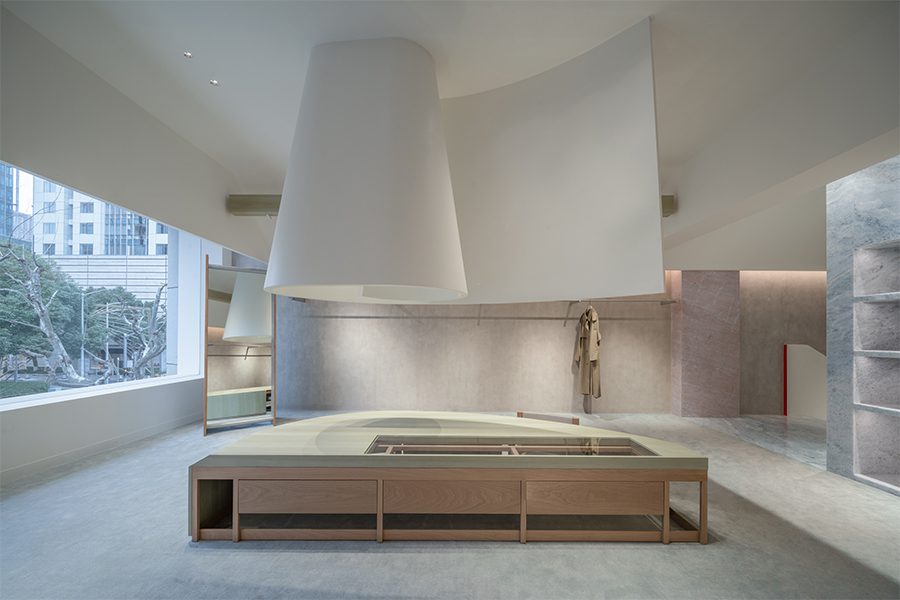Two ambitious projects from Bjarke Ingels Group (BIG) set compelling new standards certain to shape the future of urban planning. The multidisciplinary firm is one of a handful that are taking an inventive approach to the question of what a neighborhood will, and should, be. With the Downtown Brooklyn Public Realm and the Toyota Woven City in Japan, innovation is at the forefront. “We’re creating a safer and more enjoyable streetscape experience for everyone,” says Martin Voelkle, partner at BIG’s Brooklyn, New York office, which is conceiving the Downtown Brooklyn project.
Indeed, as cities and regions continue to contend with climate change, the neighborhood of the future will be a testament to combating major environmental shifts with thoughtful green spaces and technology-driven, sustainable areas that, at the same time, still feel human. It seems BIG wants to create a utopia of sorts for inhabitants to live, create, and recharge.
Downtown Brooklyn Public Realm

The reimagined public spaces in Downtown Brooklyn will feature playful furniture and street art
Since a 2004 rezoning, Downtown Brooklyn’s central business district has experienced a 30 percent population increase, 26 percent job growth, and continues to be one of the busiest retail districts in New York. Commissioned by nonprofit organization Downtown Brooklyn Partnership, WXY Architecture and BIG’s forward-thinking vision for the sprawling 240-acre public space will reveal a safer, greener, and more economically viable corridor. “We are hoping that our traffic calming efforts and shared streets will lead to increased retail and gastronomic activity, even in the currently less active pockets,” says Voelkle.

Colorful walkways will enliven Downtown Brooklyn
The plan was “inspired by European cities with fully pedestrianized streets, which allow the public realm to become a true destination—a place to meet and gather rather than merely provide a safe transit hub,” he says. To reimagine Downtown Brooklyn as an outdoor living room in a busy thoroughfare, Voelkle also took cues from BIG’s Superkilen park in Copenhagen. There, the colorful sidewalk treatments and playful street furniture and murals “created an uplifting, diverse, yet coherent streetscape experience,” he says. “Our wish is to transform Downtown Brooklyn into an even more vibrant neighborhood with a singular streetscape experience—a go-to spot for residents, workers, students, and visitors.”
Parking will be reduced to make room for tree canopies and flowering planters that will support a comfortable microclimate, while its playful character—think pink, blue, and green sidewalks—will be borrowed from Brooklyn’s history of graffiti and street art. Expect major art installations throughout the district, as well. “By reshaping the sidewalk curbs and changing the ground treatment into a colorful ‘carpet,’ Downtown Brooklyn will be reanimated into a [lively] environment,” he says.
Toyota Woven City

The Toyota Woven City will be located at the base of Mount Fuji in Japan
The impetus for this impressive project located at the base of Mount Fuji in Japan began a few years ago when Toyota announced it was no longer a car company, but a mobility company, with a new focus on everything from accessibility to the movement of goods. Dubbed the Woven City, the 173-acre site in the city of Susono will begin its first phase of construction in 2021 with hopes of becoming a pedestrian-friendly and technology-rich neighborhood that prioritizes human needs above all else.
Set to house 2,000 people upon its completion, the city will be built around a network of streets arranged around central courtyards. Leon Rost, a partner at BIG’s Brooklyn office, says they’re “essentially detangling and then reweaving the three strands of mobility that we see in today’s cities.” The first optimizes the street for autonomous, zero-emission vehicles; the second creates a promenade for bicycles, scooters, and the like; and the third develops a linear park for pedestrians, giving them the ultimate amount of mobility.

Central courtyards in the Woven City will be connected by sidewalks and a linear park
To dispel the Blade Runner-esque dystopian vision that the future is a “high-tech, hologram-ridden place with flying cars and drones,” Rost says the Woven City will celebrate the basics of what makes people happy, healthy, and connected to each other. Technology will support the city in a discreet way, he notes, hidden from view under the streets or integrated into buildings. Further, in-home robots will enhance daily life, AI technology will be used for things like health monitoring, and buildings will be clad in timber and covered with solar panels—another venture in the neighborhood’s sustainable mission. Rost explains that the Woven City will be in constant flux, an ever-evolving, living organism that will respond to the needs of the community, and the world. “When the planet prospers,” he explains, “people prosper.”

Some streets will be built specifically for bicycles and scooters at the Woven City

The Woven City buildings will be constructed with timber and solar panels
This article originally appeared in HD’s March/April 2020 issue.



